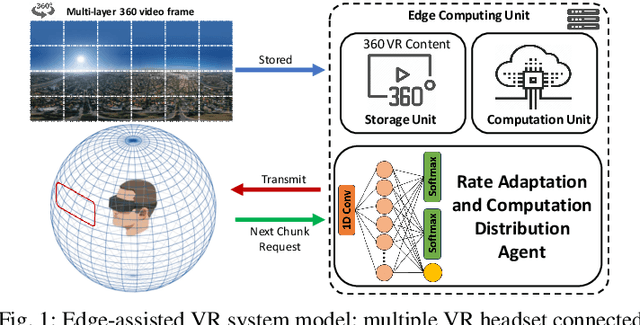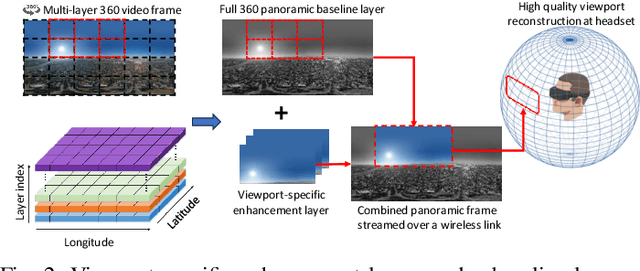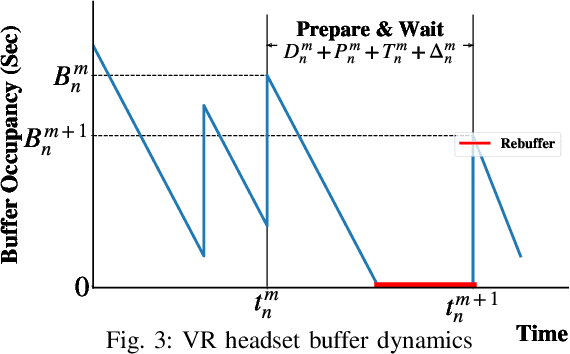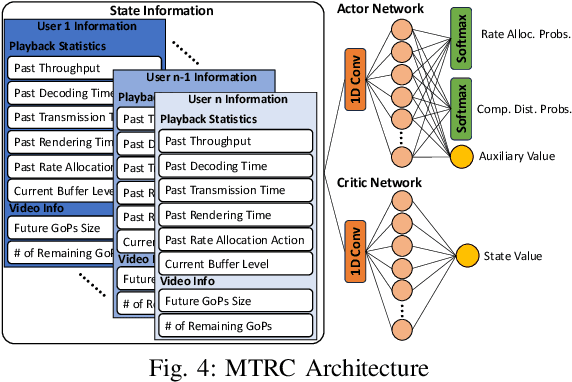Multi-Task Decision-Making for Multi-User 360 Video Processing over Wireless Networks
Paper and Code
Jul 03, 2024



We study a multi-task decision-making problem for 360 video processing in a wireless multi-user virtual reality (VR) system that includes an edge computing unit (ECU) to deliver 360 videos to VR users and offer computing assistance for decoding/rendering of video frames. However, this comes at the expense of increased data volume and required bandwidth. To balance this trade-off, we formulate a constrained quality of experience (QoE) maximization problem in which the rebuffering time and quality variation between video frames are bounded by user and video requirements. To solve the formulated multi-user QoE maximization, we leverage deep reinforcement learning (DRL) for multi-task rate adaptation and computation distribution (MTRC). The proposed MTRC approach does not rely on any predefined assumption about the environment and relies on video playback statistics (i.e., past throughput, decoding time, transmission time, etc.), video information, and the resulting performance to adjust the video bitrate and computation distribution. We train MTRC with real-world wireless network traces and 360 video datasets to obtain evaluation results in terms of the average QoE, peak signal-to-noise ratio (PSNR), rebuffering time, and quality variation. Our results indicate that the MTRC improves the users' QoE compared to state-of-the-art rate adaptation algorithm. Specifically, we show a 5.97 dB to 6.44 dB improvement in PSNR, a 1.66X to 4.23X improvement in rebuffering time, and a 4.21 dB to 4.35 dB improvement in quality variation.
 Add to Chrome
Add to Chrome Add to Firefox
Add to Firefox Add to Edge
Add to Edge